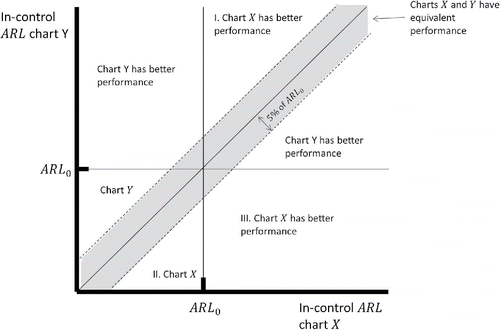Figures & data
Table 1. In-control AARL and SDARL values for the three charts based on estimated parameters when m subgroups of size n are used in Phase I.
Figure 1. Conditional in-control ARL distribution for the three control charts based on estimated parameters when m = 50 subgroups of size n are used. The boxplots show 5th, 10th, 25th, 50th, 75th, 90th, and 95th percentiles.
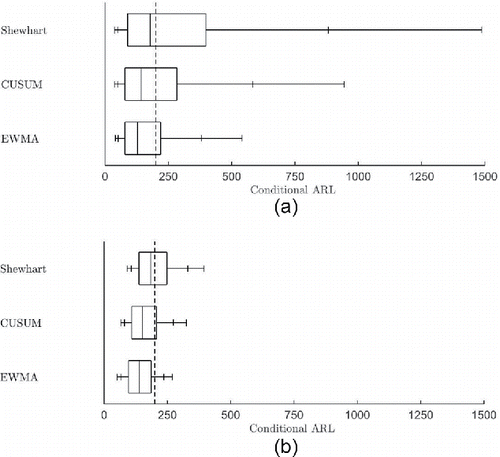
Figure 2. Conditional in-control ARL of the Shewhart chart vs. Q based on m = 50 samples of size n. Chart is designed to have ARL0 = 200 under known parameters.
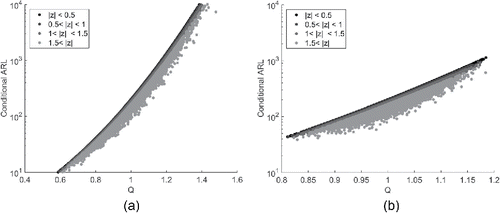
Figure 3. Conditional in-control ARL of the CUSUM chart vs. Q based on m = 50 samples of size n. Chart is designed to have ARL0 = 200 under known parameters.
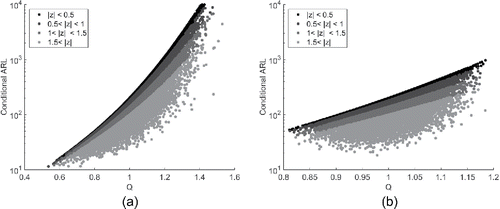
Figure 4. Conditional in-control ARL of the EWMA chart vs. Q based on m = 50 samples of size n. Chart is designed to have ARL0 = 200 under known parameters.
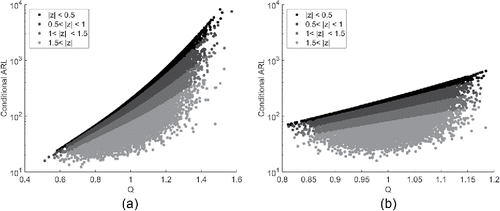
Figure 5. Conditional in-control ARL of the CUSUM chart vs. the Shewhart chart. Both charts are based on estimated parameters when m = 50 subgroups of size n are used.
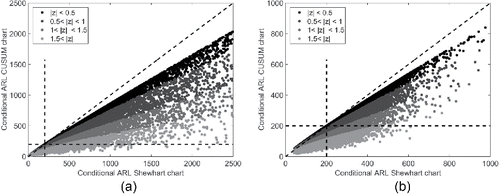
Figure 6. Conditional in-control ARL of the EWMA chart vs. the Shewhart chart. Both charts are based on estimated parameters when m = 50 subgroups of size n are used.
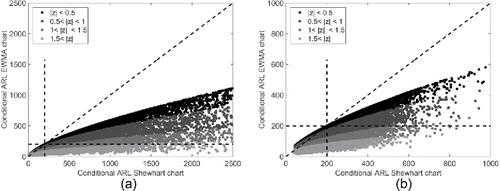
Figure 7. Conditional in-control ARL of the EWMA chart vs. the CUSUM chart. Both charts are based on estimated parameters when m = 50 subgroups of size n are used.
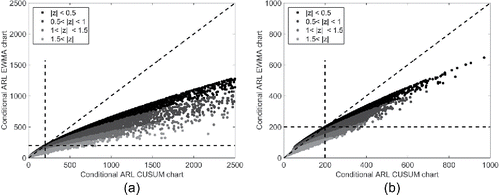
Percentage of Shewhart charts according to the conditional ARL performance compared to CUSUM and EWMA chart.
Table 3. Percentage of CUSUM charts according to the conditional ARL performance compared to the EWMA chart.

